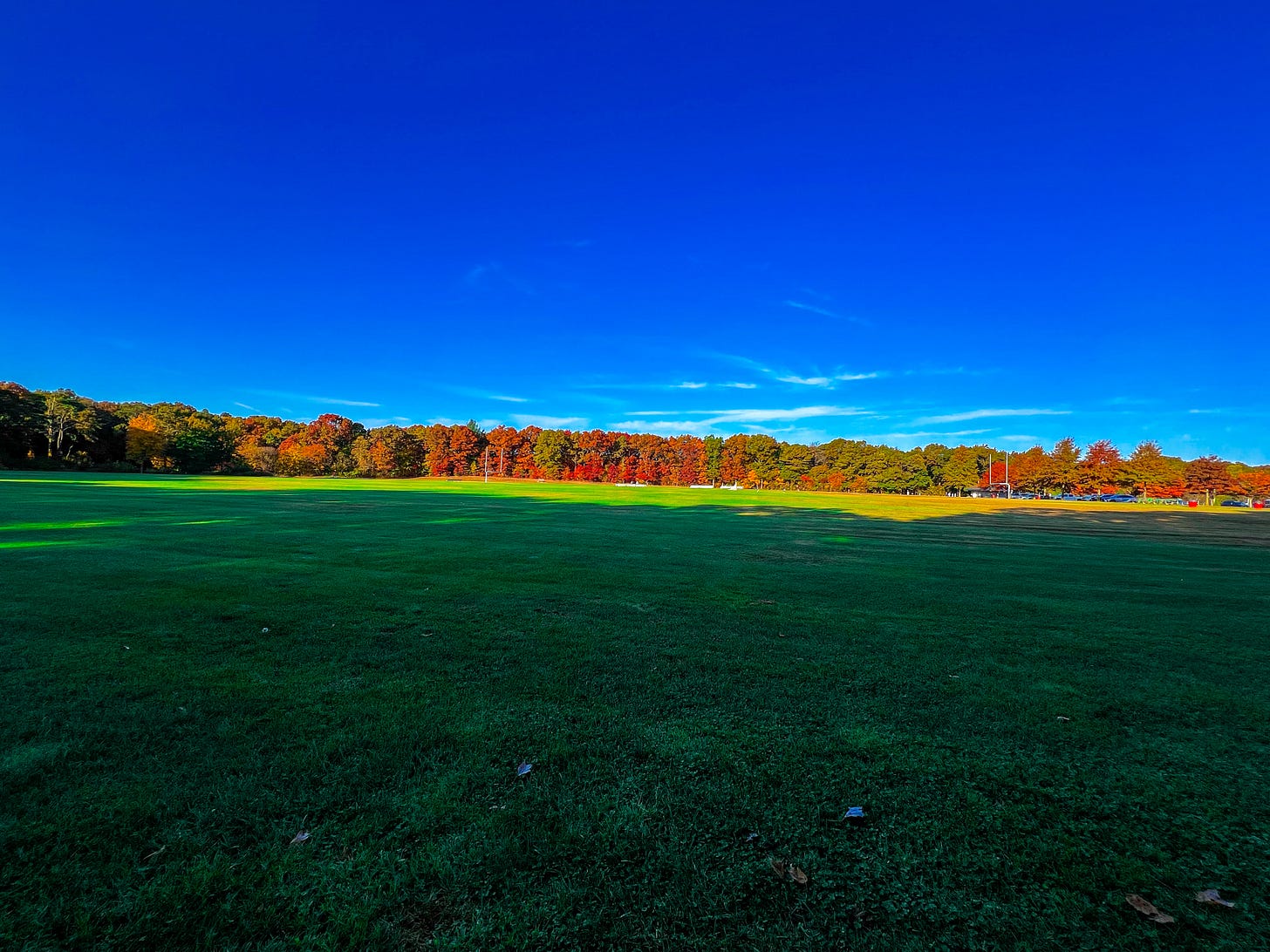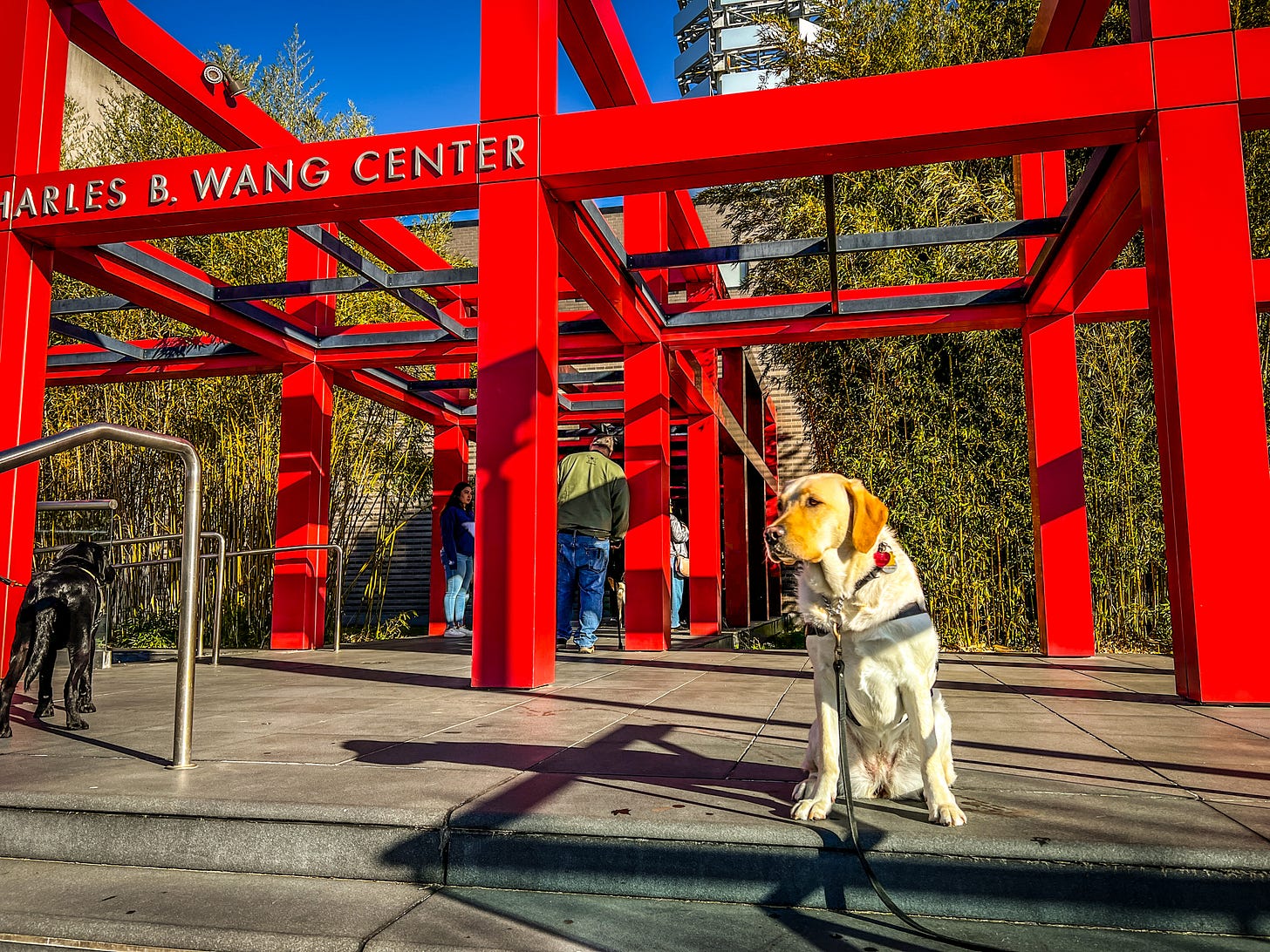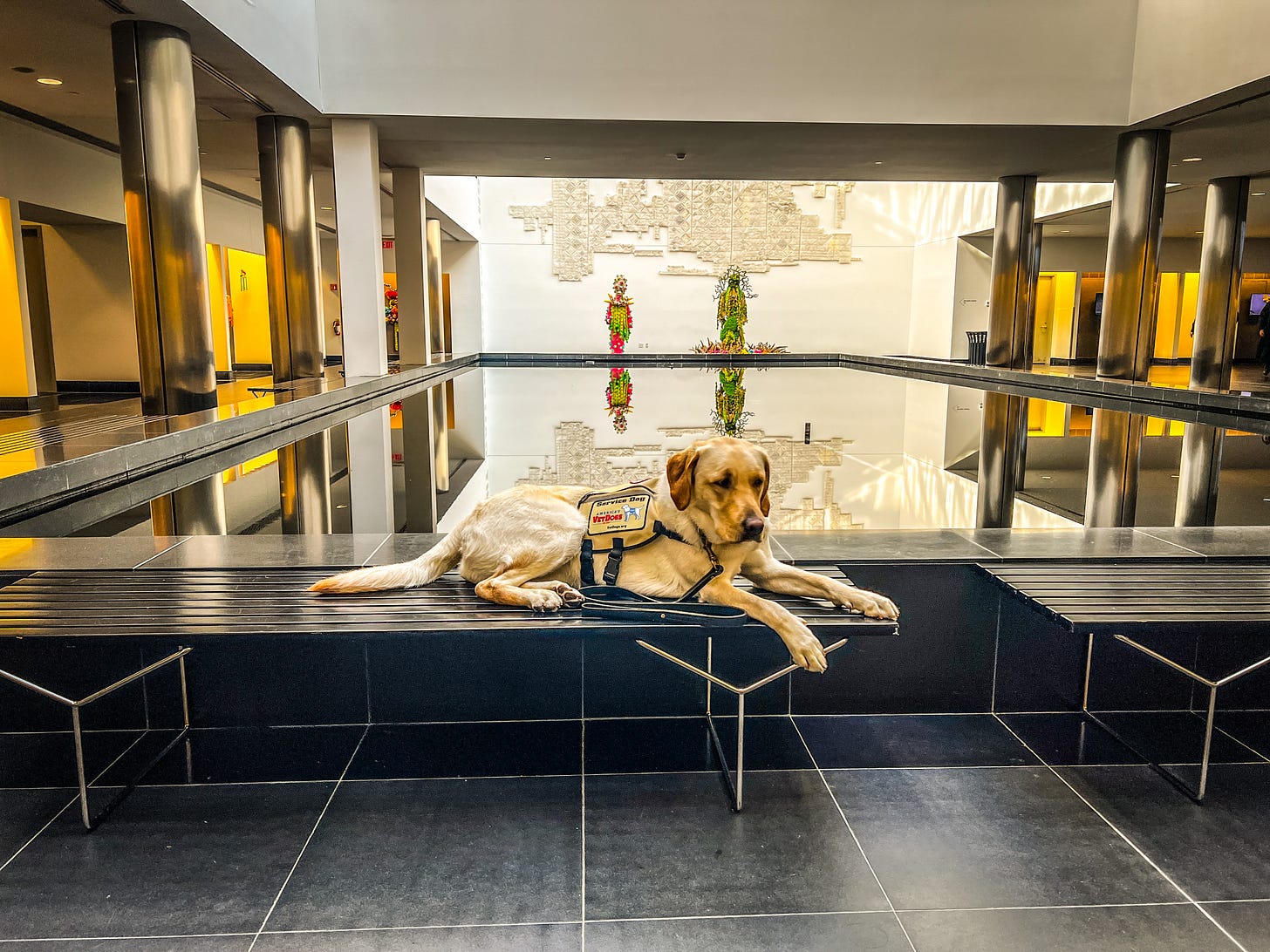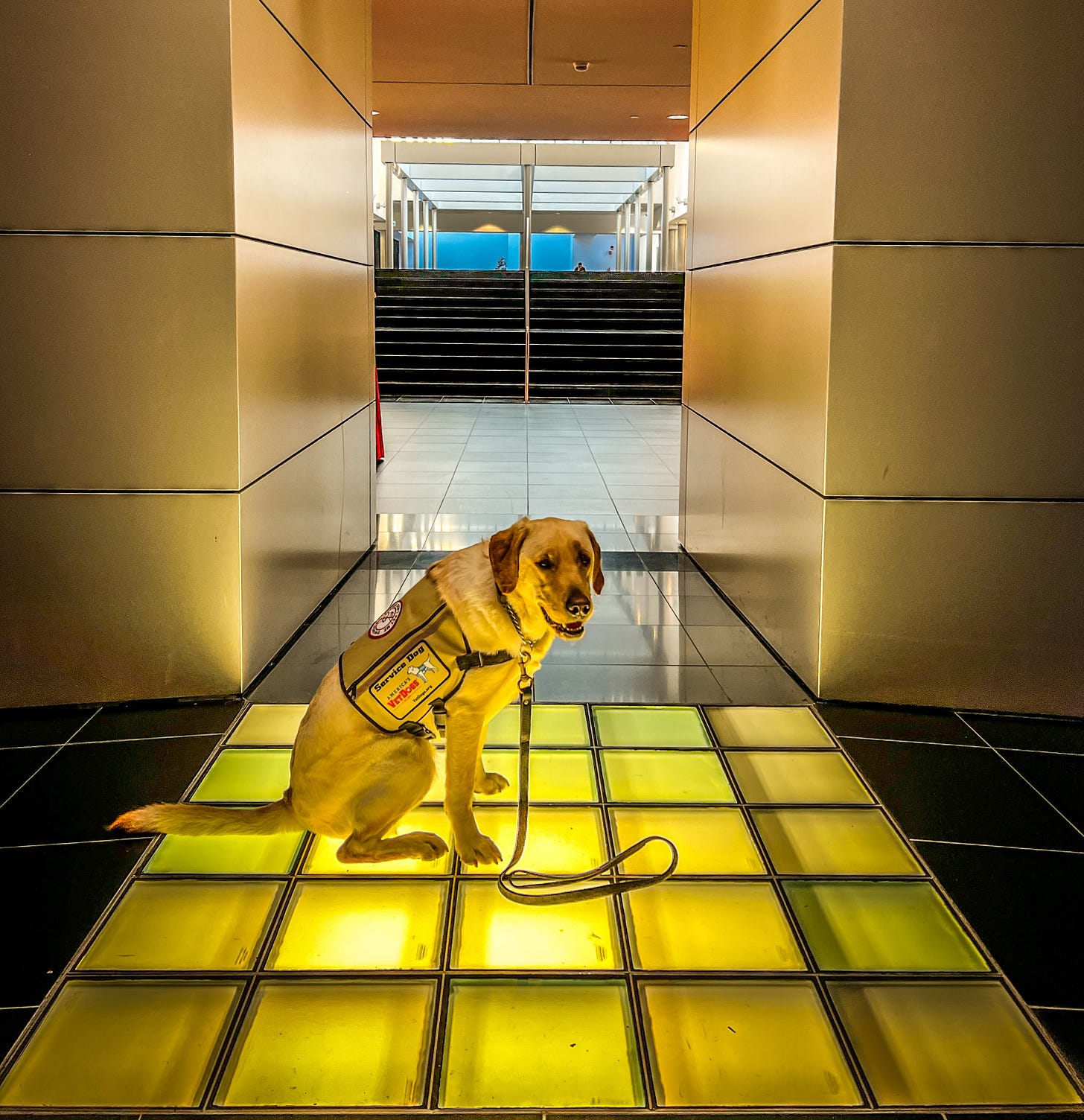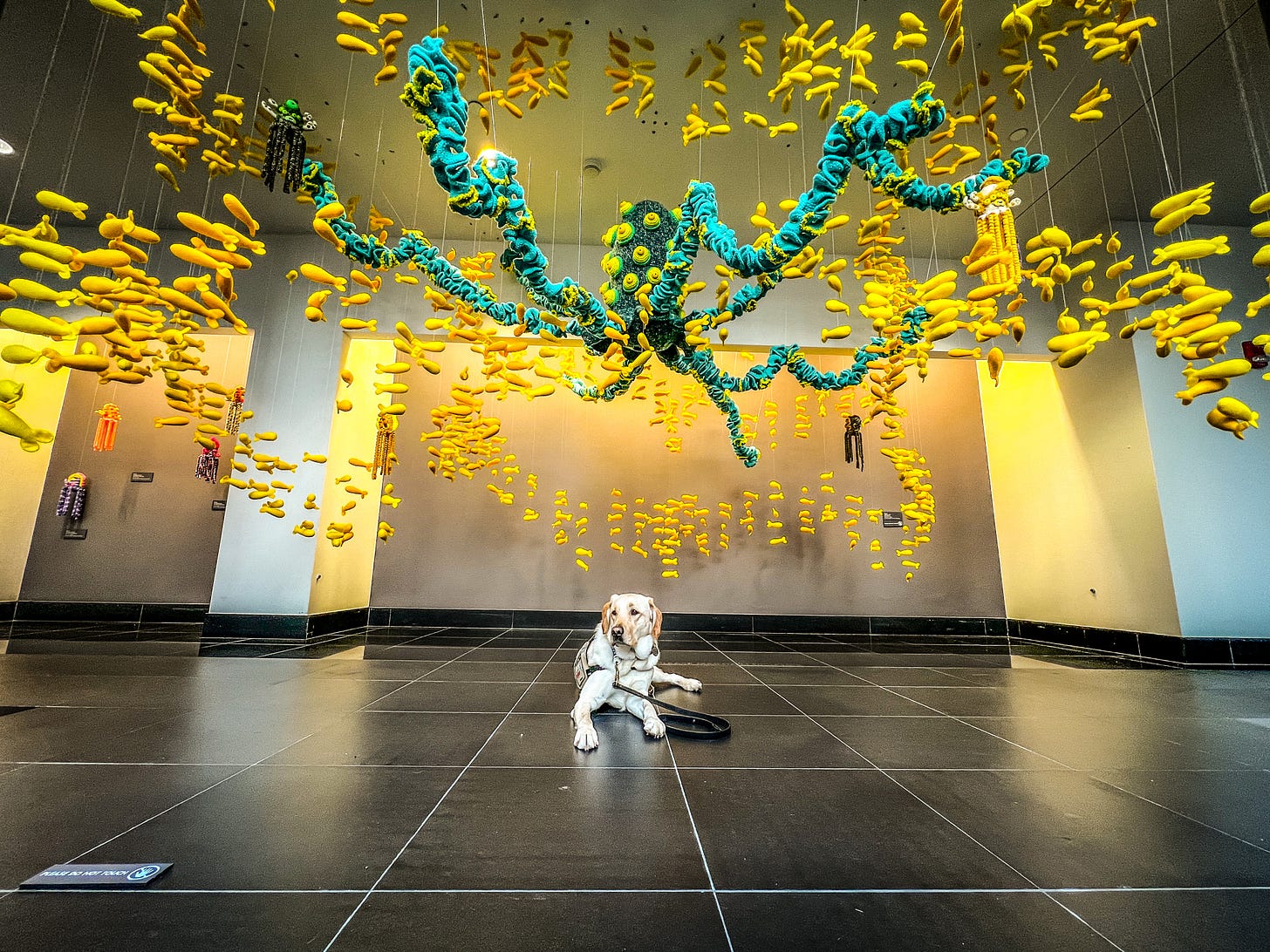About This Series
After years of silently managing the effects of combat-related PTSD, I was matched with a service dog named Spirit through a Department of Defense program. This series, The Spirit of Recovery, chronicles the real-time journey of receiving, training with, and integrating a service dog into my life. It is a raw and unfiltered account of what it takes to rebuild trust—both in a dog and in myself—after years of emotional isolation and internal struggle. These essays document the quiet victories, unexpected challenges, and deeply personal moments that have marked this chapter of my healing. I share them in the hope that others might find connection, courage, or simply the knowledge that they are not alone.
If this resonates with you, or you know someone who might appreciate reading this, please consider sharing it.
New episodes are published every Monday at 10am Eastern.
Exam Day
Spirit and I awakened to a pale grey overcast sky and the muffled sounds of commotion in the hallway—doors opening and closing, voices echoing with nervous energy, the low hum of anticipation that accompanies any day of significance. Despite knowing that in just a few short hours the building will be brimming with excited smiles—former puppy raisers arriving, family members and friends filtering in to celebrate our graduation—we students eat our breakfast in a quiet, almost reverent silence. The emotional amplitude of this course has been intense for us all. Each of us has been stripped down and rebuilt in some way. Those of us still standing are grateful to be able to do so.
For all the growth and transformation, there is also grief. Grief for who we were before we arrived, for the layers we had to shed in order to accept help. Grief for the old stories we clung to—the ones that said we weren’t worthy of healing, or too broken to try. While gaining mobility, purpose, and a path to recovery through this training, we’ve also been confronted, again and again, with reminders of our vulnerabilities, our limitations, our old ghosts.
Everything we have done has been pointed at a single purpose. All of our lectures, exercises, outings, trainings, and handler time has been preparing us for today’s event: the ADI Public Access Test.
Unlike the past ten mornings—each one louder and more chaotic than the last—today’s morning walk was serene. Quiet. A final moment of calm before the culminating event of our training. The instructors were quiet and polite. No more distractions. No more tests. They stood quietly and let each team walk on their own. The lessons were over. Today each team would have to prove they are ready to step into the real world.
Spirit and I moved together in silence, our steps in sync. She needed no corrections. Her pacing was effortless, her attentiveness total.
And me? I have nothing left but whispered prayers—desperate, pleading hopes that I can hold it together long enough to finish this day with some measure of grace. I have been stripped down to my rawest and most vulnerable form. I feel emptied and emotionally spent. I am hurting inside—a hurt I cannot quite access or understand—but I am trying to allow this process to unfold and trusting it will leave me better than when I arrived. So I press on.
Despite the near-miraculous moments I’ve experienced in these past weeks—moments of clarity, of connection, of reprieve—I feel the old temptations beginning to circle once again. The dark ones. The ones that whisper of relief in the language of escape. It’s as if they’ve been lying in wait, ready to pounce the moment structure fades. Like a salt lick in the woods, drawing a weary deer into a hunter’s range, these old lies beckon. I find myself alternating between dread over returning home to new routines and responsibilities I don’t yet feel ready for, and the venomous self-loathing that spits cruel comparisons and judgments into my thoughts. Both forces feel designed to rob me of the beauty in front of me—a simple morning walk in rural Long Island, at the height of autumn, with a dog who has become my lifeline.
The ADI Public Access Test
The ADI Public Access Test is a standardized evaluation designed to ensure that service dog teams can safely and appropriately function in public environments. Its purpose is to verify that the dog remains calm, well-behaved, and under control in a variety of real-world scenarios—such as navigating crowds, ignoring food and distractions, and staying focused on their handler. Equally important, the test assesses the handler’s ability to communicate with and manage the dog effectively using verbal commands and leash control. By demonstrating consistent, reliable behavior from both dog and handler, the test ensures that the team is ready to exercise public access rights responsibly under laws like the Americans with Disabilities Act, while also protecting the integrity of service dog programs and the trust of the public.
We loaded into vans and drove twenty minutes to the campus of Stony Brook University. I sat quietly, looking out the window, trying to memorize the trees. The muted grays of limestone and granite buildings provided a stunning contrast to the brilliant yellows, blazing oranges, and deep blood-red leaves of the maples, oaks, and hickories that lined the campus walkways. Fall had reached its peak here, and everything felt on the verge of change—like the world was holding its breath.
As soon as the van doors opened, the evaluation began. No instructions, no fanfare—just immediate assessment. Each of us unloaded ourselves first, and then our dogs, using verbal commands and proper leash control. The instructors—independent evaluators with no connection to our training facility—were watching everything.
We entered the university’s Art Center. The foyer was strikingly calm—light filled the space through tall windows, and an infinity pool stretched across the floor, reflecting the artwork on the walls. Paintings and sculptures lined the corridors. The only sounds were the gentle pads of our dogs’ feet against slate tile and the soft voices of instructors who began testing us one by one.
Spirit and I were chosen to go first.
I was instructed to heel Spirit across the building, keeping her close and controlled. She moved with a kind of joyous purpose, dancing just in front of me with each command, her body alert but relaxed. Even the instructors smiled at her enthusiasm.
She sure is eager to work, one said quietly, jotting notes on a clipboard.
The comment echoed in my mind as we moved through the space, and for a brief moment, emotion welled up in my chest. I thought about the long days and lonely nights that had led me here—nights when the silence was so heavy it felt like it had weight, like I was drowning in it. I thought about the uncertainty I carried walking into this program, the constant internal question of whether I even belonged here. I remembered sitting on the edge of my bed just a week ago, wondering if I should pack up and leave—wondering if this was all a mistake. There had been so many doubts, so many fears. Would I be able to handle a service dog? Would I bond with her? Would I do justice to the effort and time others had poured into training her? And beneath it all was the oldest fear of them all—the one that asked if I was worthy of being helped at all.
We walked up and down staircases—wide ones, narrow ones, even a spiral staircase designed to test dexterity and focus. A slice of pepperoni was hidden midway down the staircase as a distraction. Spirit didn’t flinch.
At one point I was instructed to put Spirit in a down/stay, and then walk away about 40 feet to examine a painting in the hallway. Spirit watched me passively, but stayed put and didn’t bat an eyelash or show any kind of concern. She knew I was coming back.
I paused there, pretending to study the painting, but really I was overwhelmed by how far I’d come. Just a few weeks earlier, I had gotten the call—you’ve been matched with a dog—and even then, I wasn’t sure I deserved it. I had questioned whether I’d done enough, suffered enough, waited long enough. I had felt unworthy of the gift. And now here I was, walking away from a dog who trusted me completely, who believed I would return. Behind that trust was a small army of people—trainers, puppy raisers, volunteers—who had all poured their hearts into preparing this dog for someone like me. The weight of their investment settled into my bones. I didn’t know what the future looked like, but I knew one thing for certain: I owed it to them—and to her—to try. To keep going. To make this work.
Later, her leash was taken from my hand, and I was instructed to walk away again—this time with no tether. Spirit was expected to remain calm and confident in my absence. She did. She simply sat, alert but unworried, as if to say, He’ll be back. He always comes back.
The final test came without warning. I was told to place the leash loosely across Spirit’s back—no hand on it, no physical cue—and walk across the entire building. Spirit had to remain perfectly at my side, untethered except by trust. If she got ahead of me or slowed too much, or veered off to go sniff anything, we would fail. We strolled through the quiet foyer like old friends on a familiar route, as if nothing could disturb the rhythm we’d learned together. Her body stayed aligned with mine, her movements fluid and sure.
At the far end, the instructor nodded. She marked a final note on her clipboard, then looked up and offered a small, knowing smile.
Congratulations, she said quietly.
We had passed the test.
The Aftermath
The rest of the day unfolded gently, almost reverently, as if the world around us understood what we had just endured. There were no announcements, no applause. Just the quiet relief of having made it through. Those who didn’t pass the test were given time, space, and immediate feedback. Their work wasn’t over yet. They would return the next day, reattempting the pieces that needed reinforcement. I admired them—their steadiness, their courage to keep showing up. This was never about perfection. It was about resilience. Commitment. The willingness to grow.
For the rest of us, the weight of weeks-long tension began to lift. We breathed differently. We walked lighter. Some of us drifted indoors and out, meandering the hallways, sitting outside on stone benches in the crisp fall air, watching leaves tumble and spin in the wind. Spirit lay at my feet, ears perked, eyes scanning, but body at ease. She had done her job. And I had done mine.
Someone suggested a small outing, and a few of us convinced an instructor to let us borrow a van and head to a nearby restaurant. It wasn’t a loud or raucous celebration—no champagne, no shouting, no high-fives. Just quiet conversation over warm food. The kind of conversation that happens when people have been to the edge of something together and returned changed. We talked about our dogs, our families, our fears about going home. We talked about what it might be like to try and explain this experience to others who couldn’t possibly understand. Some things you just have to live to know.
The exhaustion hit hard. Not just the physical kind, but the deep, cellular fatigue that sets in after you’ve held yourself together for too long. But beneath that exhaustion was something else—something tender and rooted. A sense of beginning.
The day after tomorrow, I would begin the process of reintegrating. I would board a plane, return to my family, resume the rhythms of a life I had left behind for this strange and beautiful interlude. But I would not return the same. I had walked in with fear and doubt, with guilt and hesitation. How I would leave was still a mystery. I didn’t feel like a hero returning home. I didn’t feel like all the cracks in my soul had been sealed. The entire training had rattled me deeply, and only now, as I had space to reflect, was I beginning to understand what had been taking place.
We had passed the test. But more than that, Spirit and I had crossed a threshold. And though I didn’t know what the future held, I knew this much: I would not be facing it alone.
About the Author
ES Vorm, PhD is a former military aviator, experimental psychologist, and lifelong seeker of meaning through service, science, and story. After a traumatic brain injury and a diagnosis of combat-related PTSD, he left behind a high-profile career in human-machine teaming to focus on recovery, fatherhood, and writing. He now lives a quieter life as a homeschooling dad, where he’s learning that healing doesn’t come from fixing what’s broken—it comes from learning to live honestly with the truth. He writes to understand, to connect, and to remind himself and others that we are never as alone as we think.





